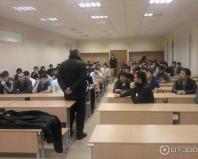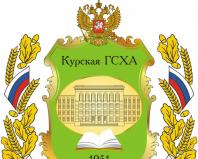Watch USSR TV shows from the 70s and 80s. See what “central television of the USSR” is in other dictionaries
USSR Central Television
| USSR Central Television | |
| A country | USSR |
|---|---|
| Broadcast area | All-Union and regional, broadcasting went through 5 zones (1990) |
| Broadcast start date |
Key dates in the history of USSR TV are:
|
| Founder | State Television and Radio of the USSR, Government of the USSR |
| Owner | state |
| Managers | Vladimir Spiridonovich Osminin Georgy Alexandrovich Ivanov |
Directors
Story
The first television broadcasts began in Moscow in 1935. In -1945 television did not work. The broadcasts were resumed on May 7, 1945, and on December 15, Muscovites were the first in Europe to switch to regular broadcasting. The main television programs of those years were devoted to the life of the Soviet Union, cultural events, science, and sports.
In December 1948, the Moscow Television Center suspended transmissions during reconstruction. On June 16, 1949, broadcasting using the 625 line standard began from Shabolovka. On March 22, 1951, the television center was transformed into the Central Television Studio. The program did not have a clearly defined theme, broadcasting both news and music programs and films, cartoons from the Soyuzmultfilm film studio, as well as educational programs. Since January 1, 1955 it has been open daily.
Subordination
- 1953. Ministry of Culture.
- May 16, 1957. Committee on Radio Broadcasting and Television under the Council of Ministers of the USSR.
- April 18, 1962. State Committee Council of Ministers of the USSR for Radio Broadcasting and Television.
- October 9, 1965. Committee on Radio Broadcasting and Television under the Council of Ministers of the USSR.
- July 12, 1970. Union-Republican State Committee of the Council of Ministers of the USSR on television and radio broadcasting.
- July 5, 1978. USSR State Committee for Television and Radio Broadcasting.
- March 7, 1991. All-Union State Television and Radio Company.
- May 13, 1991. Russian television and radio company (Second Channel CT).
- December 22, 1991. Russian state television and radio company Ostankino.
List of programs
- The obvious is the incredible
- Person and law
- Perestroika spotlight
- Commonwealth
- Hello, we are looking for talents!
- Music kiosk
- Under the sign "Pi"
- Funny boys
- Walt Disney Presents
- Up to 16 and older
- Serving the Soviet Union
- Rural hour
- Anu ka, girls
- Turn
- Autograph
- International panorama
- Cinema panorama
- Wider circle
- Heartily
- Ninth studio
DH announcers
- Evgeniy Arbenin
- Natalya Andreeva since 1982 (graduated from VTU named after B. Shchukin in 1979 (?))
- Nikolay Arsentiev
- Alisher Badalov since 1990
- Victor Balashov
- Valentina Barteneva since 1992
- Vladimir Berezin since 1990
- Irina Beskopskaya since 1992
- Maria Bulychova since the 1960s
- Alexandra Burataeva since 1992
- Marina Burtseva since 1977 (graduated from VTU named after B. Shchukin in 1978 (?))
- Boris Vassin
- Larisa Verbitskaya since 1986
- Lev Viktorov
- Galina Vlasenok since 1990
- Dina Grigorieva since 1975 (graduate of Moscow state institute culture)
- Natalya Grigorieva since 1988
- Ekaterina Gritsenko since 1984
- Alla Danko since 1974 (graduate of the First Moscow Medical Institute)
- Alexey Dmitriev (Shilov)
- Galina Dorovskaya (graduated from the VTU named after B. Shchukin in 1974 (?))
- Alexey Druzhinin since 1990?
- Gennady Dubko
- Larisa Dykina
- Inna Ermilova since 1977 (MGPI graduate)
On August 1, the famous Valentina Leontyeva, the same Aunt Valya from the program “Visiting a Fairy Tale,” would have turned 90 years old.
Change text size: A A
Valentina Mikhailovna came to work for television in 1954 as an assistant director; she became an announcer later. And by the end of the 60s, not a single episode of the festive “Ogonyok” could do without her, and “Good Night, Kids” and “Alarm Clock” were watched with pleasure not only by children, but also by adults. The most important and most personal program in her life was the program “With all my heart,” which is called the prototype of modern talk shows. On this program, old friends and relatives separated by the war met, and the whole country cried with the heroes of the program. Aunt Valya never got married, although Bulat Okudzhava himself asked for her hand. Television remained her only love.
Today we decided to remember which other Soviet TV presenters gathered the whole family in front of the screens.
Yuri Nikolaev began his career as an artist in Moscow, as an actor at the Pushkin Theater. But acting did not bring him much fame or popularity. People began to recognize Yuri Alexandrovich by sight only when he became the host of one of the most popular programs on Soviet television, “Morning Mail.” And then things went on: they began to invite him to host “Blue Light”, “Song of the Year”. And later, during perestroika, Yuri Nikolaev created his own production company “UNICS”, which produced the weekly program “Morning Star”. Many famous artists today started with this television competition: Yulia Nachalova, Alexey Chumakov, Valeria and many others.
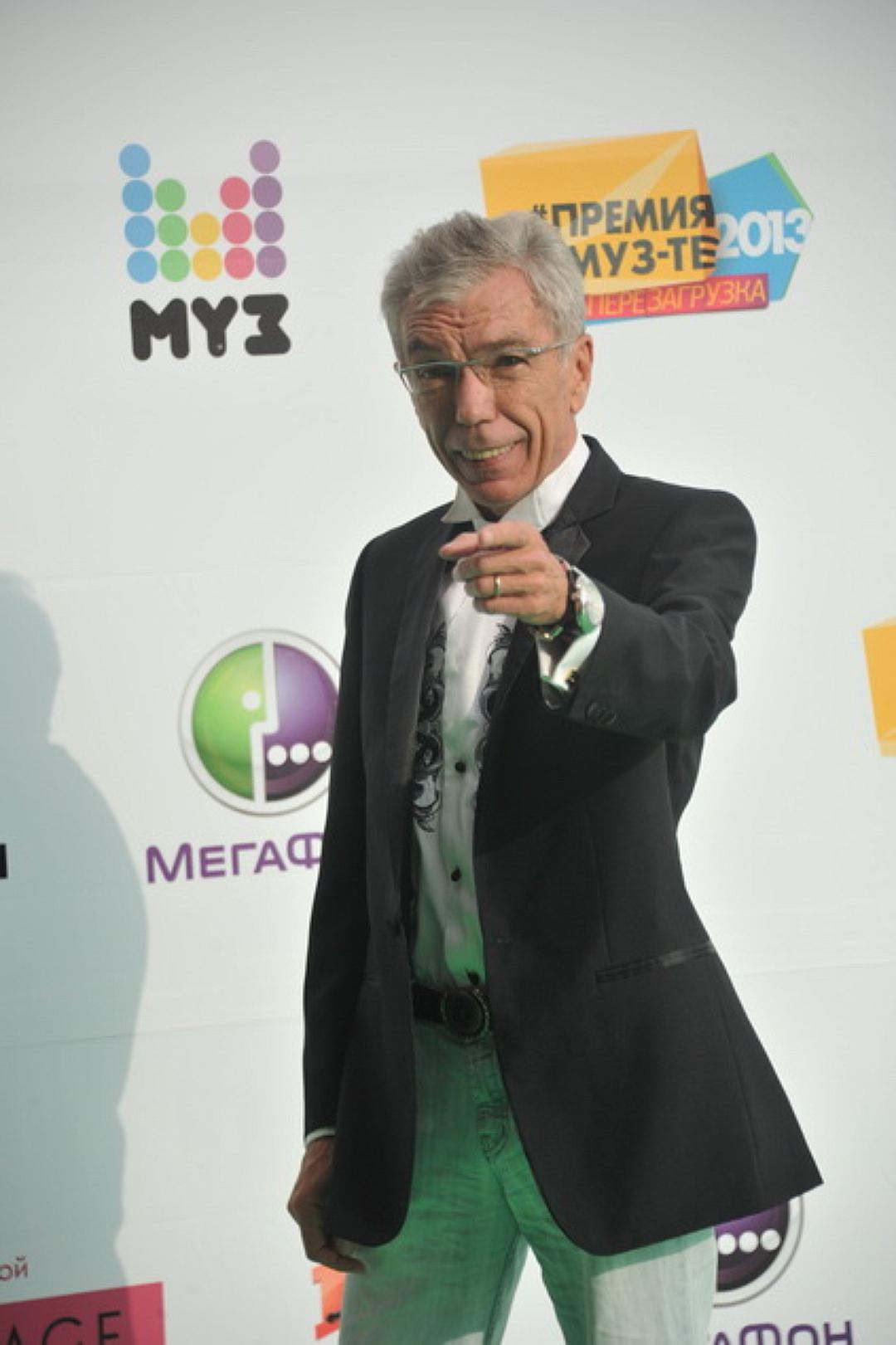
Yulia Vasilyevna hosted one of the first programs on medical topics on domestic TV - the popular science program “Health”. Moreover, by profession she is not an artist or a TV presenter, but a doctor. That is why her program was still scientific, and the program gained popularity thanks to the personal charm of Yulia Belyanchikova. She remained the permanent host of the program for more than twenty years. During this time, the flow of letters for transmission increased from 60 thousand per year to 160 thousand. Moreover, the audience’s questions were answered not only on air, but also by correspondence. For this purpose, the program employed four qualified doctors.
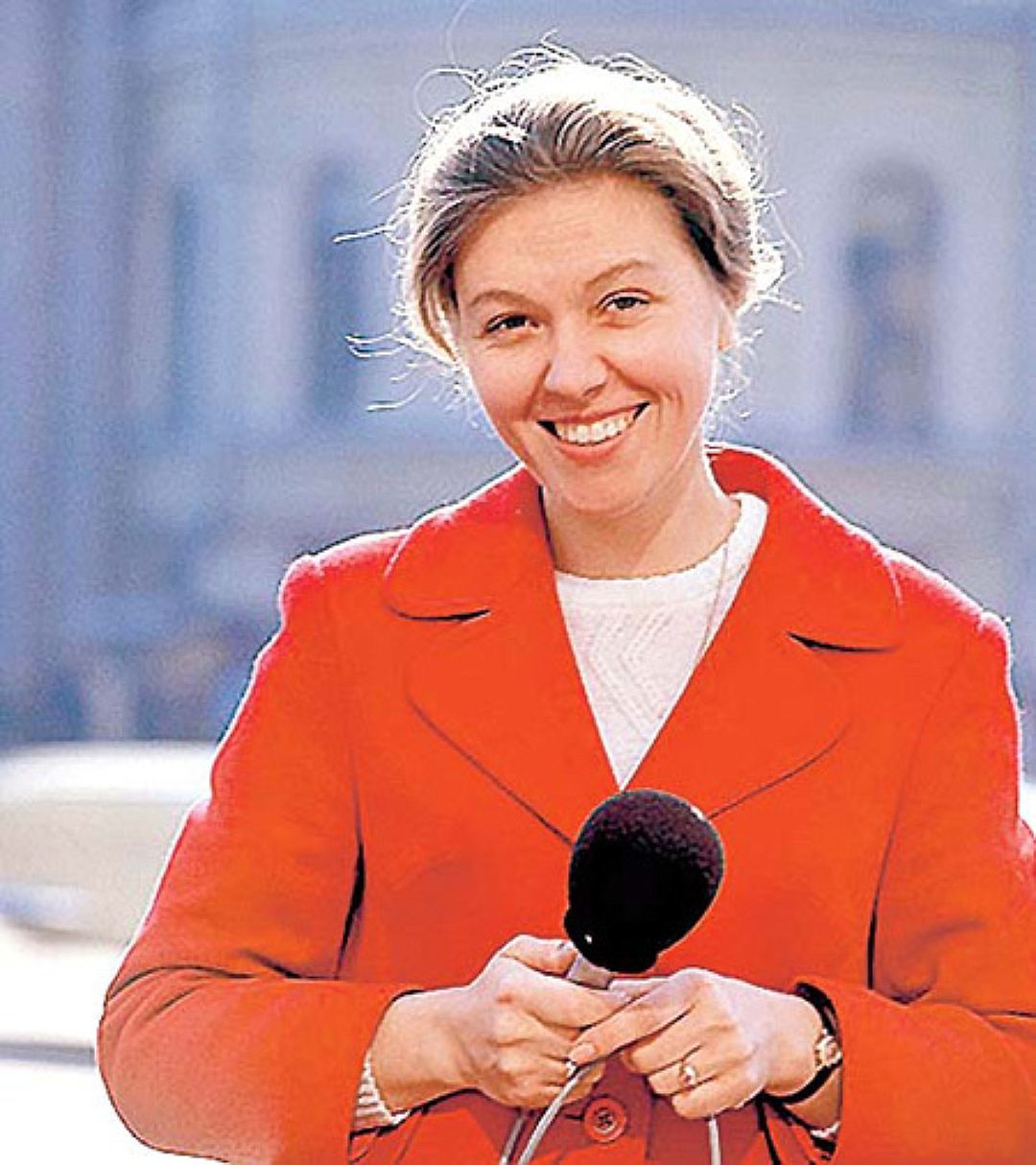
Alexander Vasilyevich is the founder of humor on domestic television. We say “Maslyakov”, we mean “Club of the cheerful and resourceful” and vice versa. Alexander Maslyakov has been working on television since 1964 and even now, despite his advanced age - he is 71 years old - he remains the permanent presenter, director and director of KVN. And “The Club” itself, in turn, remains one of the most popular programs on TV. In addition, Alexander Vasilyevich hosted “Hello, we are looking for talents”, “Jolly guys”, “12th floor”, reports from the World Festivals of Youth and Students, and was the presenter of international song festivals in Sochi for several years. And now Alexander Vasilyevich also presides over the jury at the “Minute of Fame”.
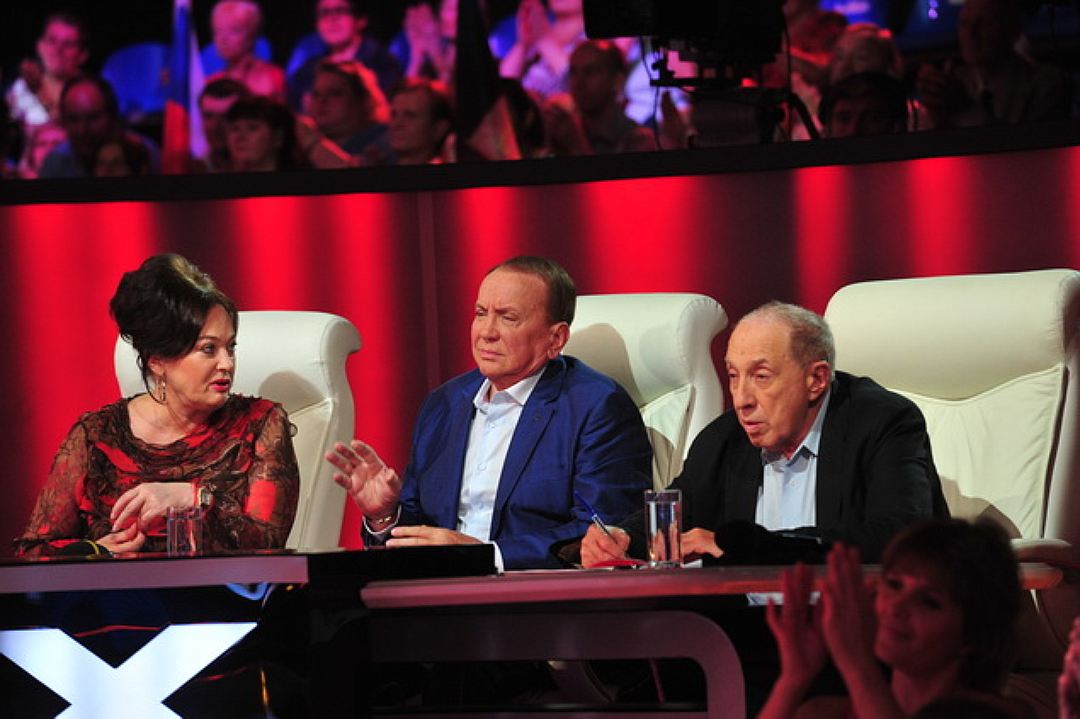
Alexander Evgenievich, in general, did not aspire to television. He studied at the Faculty of Law of the Russian State University, completed postgraduate studies at the Faculty of Philosophy of Moscow State University, and became a candidate of philosophical sciences. After graduating from graduate school, he got involved in big politics and was even a speechwriter for Secretary General Leonid Brezhnev. On TV, Alexander Bovin was also far from entertaining programs - he was a serious publicist. Bovin gained national fame during his time as the host of the television magazine “International Panorama”, which had very high ratings among viewers. The program, which attracted an audience of millions, was even called a “window to the world” - it included reports on Western culture and art, here you could see footage of luxury cars, unprecedented architecture and interiors. And Alexander Bovin himself looked unconventional - shaggy, mustachioed, without a tie, and broadcast as if he was talking to the audience like a neighbor, sitting in the kitchen.

Igor Leonidovich Kirillov is rightfully considered a legend of Russian television. He can be called a real news star. In 2001, he even received the honorary title “Man of the Epoch.” In addition, his award list includes three orders: the Red Banner of Labor, “For Services to the Fatherland” of the 3rd and 4th degree. Igor Kirillov has a theater education; before coming to television, he played at the Taganka Theater. In July 1957, he began working at the Shabolovsky Television Center as an assistant director of the music editorial office of the Central Television. And two and a half months later he won the announcer competition and went on air for the first time. Igor Kirillov was the announcer of the Vremya program for more than 30 years, becoming the face of the news program, and his signature timbre was recognized from the first words and is still recognized today. He was even trusted to give New Year's addresses to the residents of the country instead of the leadership of the USSR. By the way, Igor Kirillov still broadcasts the annual parades in honor of Victory Day on Red Square.
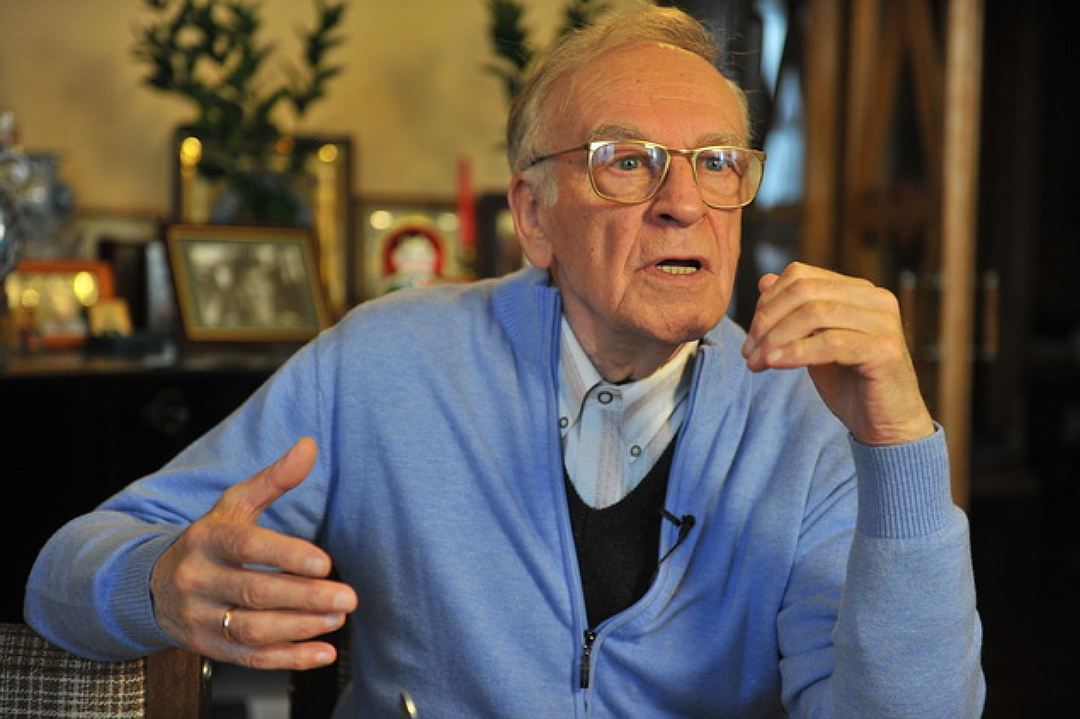
Actually, Alexander Ivanov is not a professional TV presenter at all. He is a teacher, graduated from the Faculty of Drawing and Drawing at the Moscow Correspondence Institute and worked as a teacher of drawing and descriptive geometry. He gained fame, of course, not as a teacher, but also not as a TV presenter. Popularity came to him even before TV, when he became interested in writing poetic parodies. His first book, Love and Mustard, was published in 1968. He was accepted into the Writers' Union, performed a lot on stage and even played a couple of small roles in films. He came to television in 1978 and hosted the humorous program “Around Laughter” for 12 years, although at first it was planned that he would be a guest in one of the first episodes. San Sanych, as he was affectionately called, turned out to be so natural in the role of presenter that they decided to leave him. And not in vain - he made millions of TV viewers laugh.

Son of the laureate Nobel Prize Petra Kapitsa was born in Cambridge. It was destined for him to study science and, indeed, he became an outstanding physicist and was vice president Russian Academy natural sciences. But his merit is not only research work, but also in the fact that he brought science to people. And he did it in such an accessible form that the magazine “In the World of Science,” where he was editor-in-chief, became one of the most popular periodicals in the country, and episodes of the TV show “Obvious - Incredible” are still shown on the “Retro” channel. For his achievements in the popularization and propagation of scientific knowledge, he was awarded the RAS Prize and the RAS Gold Medal.

Remember the children's TV show "ABVGDeyka"? Surely you remember. And remember its presenter Tatyana Kirillovna, the teacher, too. She said that “ABVGDeyka” is the only non-politicized program on Soviet television. And she spoke with knowledge of the matter, because she managed not only to host a fun educational program for children, but also to manage the editorial office of children's programs. Tatyana Chernyaeva
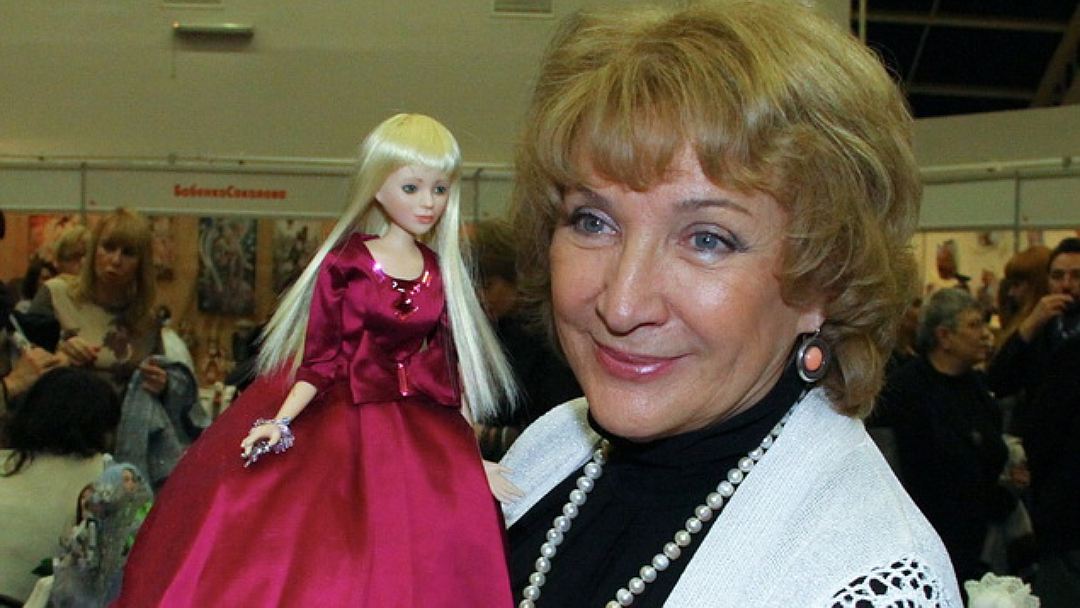
The first association with the name of this TV presenter is the “Song of the Year” festival, the broadcast of which was not missed in any family. After all, “Song” was the main event in the world of Russian pop music, and later pop music. We can say that this is the oldest show on our TV, because “Song” is still on today, starting in 1971. Together with Evgeny Menshov, Angelina Vovk hosted the festival 18 times, until 2006. In 2007, a scandal broke out: Alla Pugacheva ousted the presenters from the program, turning “Song” into her benefit performance. Now Angelina Mikhailovna hosts the “Good Health” program on First together with Gennady Malakhov
The TV show “Travelers Club”, which Yuri Alexandrovich hosted for 30 years, is listed in the Guinness Book of Records as the oldest program on Russian television. It aired weekly for 43 years and closed only after the death of Yuri Senkevich in 2003. Yuri Alexandrovich – military doctor, candidate medical sciences and colonel of the medical service. And also a famous traveler, president of the Russian Travelers Association. He took part in the Soviet Antarctic expedition "Vostok", together with the famous Norwegian explorer Thor Heyerdahl, he made two expeditions, which became significant scientific events. Senkevich was invited to television in 1973. But this work did not interfere with his travels. He even took part in the first Soviet expedition to Everest, and at that time Yuri Alexandrovich was already 50 years old.
The first transmissions of television images by radio in the USSR were made on April 29 and May 2, 1931. They were carried out by decomposing the image into 30 lines. Using the short-wave transmitter RVEI-1 of the All-Union Electrotechnical Institute (Moscow), images of a living person and photographs were transmitted at a wavelength of 56.6 meters.
Television in those years was carried out using a mechanical system, i.e., scanning the image into elements (1200 elements at 12.5 frames per second) was ensured using a rotating disk. Due to the simplicity of the device, the TV was accessible to many radio amateurs. Television broadcasts were received in many remote areas of our country. However, mechanical television did not provide satisfactory image quality. Various improvements in the mechanical television system have led to the creation of complex designs using a rotating mirror screw, etc.
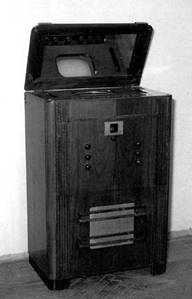
Television receiver RVEI-1 Television receiver TK-1
For changing mechanical systems cathode ray television systems arrived. In the early 30s, a transmitting television cathode ray tube with charge accumulation was proposed in the USSR by S.I. Kataev. In 1936, P.V. Timofeev and P.V. Shmakov were issued an author's certificate for a cathode ray tube with image transfer. This tube was the next important step in the development of electronic television. Research in the field of transmitting and receiving cathode ray tubes, scanner circuits, broadband amplifiers, television transmitters and receivers, and advances in radio electronics prepared the transition to electronic television systems, which made it possible to obtain high quality Images.
In 1938, the first experimental television centers in Moscow and Leningrad were put into operation in the USSR. The decomposition of the transmitted image in Moscow was 343 lines, and in Leningrad – 240 lines at 25 frames per second. On July 25, 1940, the 441-line decomposition standard was approved.
First successes television broadcasting made it possible to begin developing industrial designs of television receivers. In 1938, serial production of console receivers for 343 lines of the TK-1 type with a screen size of 14x18 cm began. Despite the fact that during the Great Patriotic War television broadcasting was stopped, research work in the field of creating more advanced television equipment did not stop. Soviet scientists and inventors made a great contribution to the development of television: S. I. Kataev, P. V. Shmakov, P. V. Timofeev, G. V. Braude, L. A. Kubetsky A. A. Chernyshev and others. In the second half of the 40s, the decomposition of the image transmitted by the Moscow and Leningrad centers was increased to 625 lines, which significantly improved the quality of television broadcasts.
Mass production of KVN-49 televisions on a tube with a diameter of 17 cm (developed by V.K. Kenigson, N.M. Varshavsky, N.A. Nikolaevsky) began in 1949. Increasing demands for TV broadcasting led to the creation in Moscow on March 4, 1950 of the first scientific center for a receiving television network.
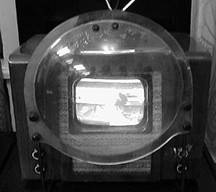
![]()
TV KVN-49 Teleradiola "Belarus"
The rapid growth of the transmitting and receiving television network began in the mid-50s. If in 1953 only three television centers operated, then in 1960 there were already 100 powerful television stations and 170 relay stations operating low power, and by the end of 1970 - up to 300 high-power and about 1000 low-power television stations. In 1963, unified black-and-white and then color televisions were developed.
Color television reception was carried out on “Rainbow” TVs with a rotating light filter. However, such a system required a significant expansion of the range of video frequencies and was not compatible with the existing black-and-white television system. In 1956, in the laboratory of the Leningrad Electrotechnical Institute of Communications named after. M.A. Bonch-Bruevich developed and manufactured, under the leadership of P.V. Shmakov, a color television installation with simultaneous color transmission.
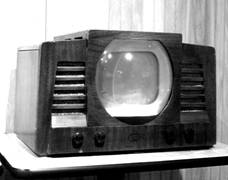
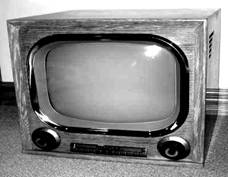
Color TV "Rainbow" Color TV "Minsk - 1"
Tests were carried out over a number of years in the Soviet Union and other countries various systems color television. In March 1965, an agreement was signed between the USSR and France on cooperation in the field of color television based on the SECAM system. On June 26, 1966, it was decided to select the joint Soviet-French color television system SECAM-111 for implementation in the Soviet Union. The first broadcasts under the joint Soviet-French system began in Moscow on October 1, 1967, and the release of the first batch of color televisions was timed to coincide with the same time.
On November 4, 1967, the All-Union Radio and Television Transmitting Station of the USSR Ministry of Communications came into operation. The main structure of the All-Union Radio Television Transmitting Station in Ostankino is a free-standing tower with a total height of 540 meters. It exceeds the height of the famous Eiffel Tower in Paris by 240 meters. The commissioning of the television tower in Ostankino ensured: an increase in simultaneous television programs to four; increasing the radius of reliable reception of all television programs from 50 to 120 km and ensures reliable reception of all programs in an area with a population of more than 13 million people; significant improvement in image reception quality; a sharp increase in the strength of the electromagnetic field of the television signal, which made it possible to eliminate the influence of various types of interference when receiving television programs; further development of intercity and international exchanges of television programs via radio relay, cable lines and space communication channels; a significant increase in the volume of outside broadcasts by simultaneously receiving signals from ten mobile television stations and stationary broadcast points; ensuring the transmission of radio broadcasting programs via VHF radio stations for the population and to radio broadcasting nodes in the Moscow region, as well as automatically turning on and off radio nodes by broadcasting encoded signals.
On the day of the 50th anniversary of the Great October Socialist Revolution (November 7, 1967), the first color television broadcast from the Red Square parade and demonstration of workers took place. The introduction of color television opened up great opportunity to improve the quality of broadcasts and made it possible to significantly increase the emotional perception of television broadcasts and see images in natural colors.
In 1960, the first transmission of color television took place in Leningrad from the experimental station of the Leningrad Electrotechnical Institute of Communications. At the same time, experimental televisions were made to receive color television broadcasts.
The first exchange of transfers between Moscow and Leningrad, Leningrad and Kiev by cable lines was held on December 31, 1960. In 1964, transmissions were started on the international radio relay line Kyiv - Bucharest - Sofia and on the international cable line Moscow - Lvov - Katonice - Prague - Berlin.
From 1950 to 1970, over 270 powerful television stations and television centers, about 900 low-power television broadcasters were built in the USSR, and an extensive network of cable and radio relay lines was created for transmitting long-distance and international television programs.
Until 1965, all television receiving equipment was assembled mainly using lamps. Semiconductor devices were replaced only by diode radio tubes, which were used as power rectifiers and detectors, which was explained by the lack of reliable and cheap transistors.
In 1965, the Kozitsky plant developed and produced the first tube-semiconductor TV “Evening”, the television channel switch, video amplifier and line scanning of which were assembled on lamps, and the remaining components and blocks were assembled on transistors.
Table 5.1
Frequency channels of meter range television broadcasting
|
Channel no. |
Frequency band, MHz. |
Image carrier frequency |
Carrier frequency of sound |
|||
In 1966, the Kuntsevo Mechanical Plant in Moscow developed and produced a small-sized portable TV set, “Yunost,” assembled entirely on transistors.
In those years, television broadcasting in the USSR was carried out mainly on 12 channels in the meter wavelength range.
The width of each channel was 8 MHz, the separation between the image and sound carrier frequencies was 6.5 MHz.
By 1970, another 19 channels were mastered, which are located in the region from 470 to 622 MHz. Due to the fact that the wavelength of the channel in this range is less than 1 meter, they were called channels of the decimeter wave range.
Table 5.2
Frequency channels of UHF television broadcasting
|
Channel number |
Frequency band (MHz) |
Image carrier frequency (MHz) |
Image wavelength (dm) |
Sound carrier frequency (MHz) |
Sound wavelength (dm) |
|
The average frequency for which television antenna vibrators are designed is determined as the semi-sum of the extreme frequencies of the corresponding channel.
These data were usually presented in the available literature so that citizens could independently manufacture receiving antennas for individual use. The fact is that even in the 70s of the last century, antennas for collective use had not yet found widespread use. And today, even in regional centers, not to mention small villages, the population basically uses individual antennas for television reception of signals.
During these years, residents of Siberia and the Far East saw only local programs, almost all of them were broadcast live.
On October 4, 1957, with the launch of the first Soviet Earth satellite (AES) into orbit, the era of practical application of astronautics and one of its areas - space communications - began. Starting from April 23, 1965, the USSR launched a number of active Molniya-1 communications satellites into elliptical orbits with the following parameters:
–maximum distance from the Earth’s surface (apogee) –39957 km. (40 thousand km.) over the northern hemisphere;
– minimum distance from the Earth’s surface (perigee) – 548 km (500 km) above the southern hemisphere.
On odd orbits, the apogee of the satellite (artificial Earth satellite) was over the territory of the USSR and it provided communication between any points in the USSR, Europe and Asia for 9 hours. On even orbits, the apogee of the satellite was above North America and provided communication between the European part of the USSR and North America for 3 hours. The low angular velocity of the satellite near the apogee made it easier to track it, the accuracy of which reached 7 minutes.
An epoch-making event for TV broadcasting in Western and Eastern Siberia was the launch in our country of the first Ekran satellite into geostationary orbit. Via satellite television signal of sufficient quality from Moscow could be received anywhere in the Soviet Union using simple domestic equipment, which is why the eastern part of the USSR received a television signal with technical interruptions. The break time was 5–15 minutes.
The first transmission of color television programs via the SECAM system from Moscow to Paris via the Molniya-1 communication satellite was carried out on November 29, 1965, and from Paris to Moscow on May 28, 1966.
For the first time in the world, on May 18, 1966, it was shown on television. globe from a distance of 40 thousand km with a television camera installed on the Molniya communications satellite.
Behind short term(less than two years) a network of stations for receiving television programs from artificial Earth satellites “Molniya - 1”, called “Orbit”, was built and put into operation on November 2, 1967. The first stations of this network were built in the most inaccessible and remote cities - Magadan, Yakutsk, Yuzhno-Sakhalinsk, Petropavlovsk-Kamchatsky, Vorkuta, Norilsk, Khabarovsk, Chita, etc. Thanks to this, the audience of television viewers who were able to receive Central Television programs increased by approximately 20 million people.
The “Moscow” and “Moscow Global” satellite systems solved the problems of distributing television program signals over a large territory of our country and abroad, including USSR representative offices in many countries.
In the late 1950s, almost all television programs were broadcast "live", and it was difficult to imagine that just a few years later most programs would be broadcast pre-recorded on magnetic tape. This technological revolution in television centers around the world was carried out by video recorders, the first manufacturer of which was Ampex (USA). In 1956, such a tape recorder was demonstrated in the USA as a device for recording television programs.
In November 1972, it became possible to conduct outside broadcasts using mobile television stations (TVS). In April 1988, the use of a set of wearable television journalistic equipment with a video recorder began, and from January 1, 1989, the preparation of materials for television programs on film was completely stopped.
On October 26, 1976, through the Ekran satellite system, regular TV broadcasts began from Moscow to the territory of Siberia and the Far East, which were received on individual receivers.
Broadcasts from XXII Olympic Games in Moscow were broadcast by all programs of central television and 20 international television channels from July 19 to August 3, 1980. For the Olympics-80, the Olympic Television and Radio Complex (OTRK) was created.
The first satellite teleconference “Moscow – Los Angeles” on September 5, 1982 was dedicated to the dialogue between musical groups of the USSR and the USA.
In February 1999, multi-channel digital satellite TV broadcasting (“NTV-plus”) was launched. Up to 69 channels are transmitted here, the receiving parabola (antenna) has a diameter of up to 60 cm.
The plan adopted at the World Radiocommunication Conference WRK-2000 (Istanbul) assigned Russia 74 frequency channels at five national positions in the geostationary orbit (more than for any state in the world). Thus, Russia retains 16 fully protected channels in each of the 4 orbital positions in the Plan (36, 56, 86, 140 degrees East longitude).
Since 2001, digital terrestrial broadcasting has begun in a number of areas of Russia. During these same years, along with terrestrial television Pay cable television is beginning to develop in large cities.
In August 2002, in Moscow, with the ability to receive in motion in a car on channel 32, the Digital Television and Radio Broadcasting company began broadcasting two programs (an information digest channel and an entertainment channel).
In 2004, the Government of the Russian Federation decided to introduce digital TV broadcasting using the European DVB system. The high noise immunity of the DVB system has made it possible to transmit digital programs on cable networks in radio channels that are not used in analogue TV networks due to interference. The traditional role of TV broadcasting as a provider of unidirectional services is changing. Mass interactivity makes it possible for users to dialogue with the source of programs and other services. TV broadcasting has become bidirectional using Internet backchannels and other information services. The first interactive cable network in Russia, the Comcor-TV project is designed to provide a range of digital multi-program interactive TV and radio broadcasting services, Internet access, as well as telephony based on an interactive service platform. It began operating in 2000 and currently covers more than 700 thousand apartments in various administrative districts of Moscow. The range of services is expanding. These are “video on demand”, Web television, video monitoring of home and office security, and additional multimedia services. Reverse interactive channels with the consent of viewers, can significantly increase the effectiveness of mediametric audience measurement systems.
In June 2006, the RRB Regional Radio Conference 2004/2006 concluded in Geneva, where an agreement and plan for digital services in the bands 174-230 MHz and 470-862 MHz were concluded. The Russian delegation has achieved a significant frequency resource. There are 1000 broadcast zones. In each, you can create six or more multiplexes of 4–5 programs. This is when using MPEG-2 technology, and when using the new MPEG-4 technology, the number of programs is expected to double.
Oleg Kolenchenko,
September 29, 2014, 13:00
Mechanical television in the Soviet Union began broadcasting on October 1, 1931. It turns out that this year domestic television turns 83 years old! Therefore, we decided to remember the old days and talk about how Soviet TV developed.
« Television belongs to the future. There will be no newspapers, no books, no cinema, no theaters, but only continuous television“, said one of the characters in the film “Moscow Doesn’t Believe in Tears.” Fortunately, his prediction did not come true. People still read newspapers and books, go to movies and theaters. But they often watch television.
Television does not belong to either the present or the future, not at all. And it is unlikely that this will ever happen. However, television has long become an integral part of our lives. Yes, now you can no longer find a TV in every home - many people prefer to watch films and programs using the Internet. However, this does not mean that the development of television has stopped. Telecom operators are desperately trying to promote new technologies and improve existing functionality.
If we take 1931 as a starting point, when the so-called mechanical television began broadcasting in Moscow, then the history of the development of domestic TV goes back more than 80 years. We decided not to bypass such interesting topic. Today we will talk about key points the formation of television in the USSR.
About the first television technologies
However, before we begin the story about the first Soviet televisions, it is necessary to look into an even more distant past - late XIX century. At that time, inventions began to appear, which later formed the basis of the first television devices.
The most significant of the early developments was the system of the German engineering student Paul Nipkow. In 1884 he created special mechanism for scanning and reproducing an image, which was called the “Nipkow disk”. How was it built?
The Nipkow disk was a simple rotating disk made of any opaque material (most often this role was played by ordinary cardboard or even thick paper, less often aluminum) and having certain number holes arranged in a spiral at an equal angular distance from each other.
With the help of this disk, it became possible to convert images into electrical impulses. To do this, a photocell was installed behind the disk, which assessed the brightness of each point in the image. The sensitivity of photocells of that time was very low, so sometimes to improve the quality of the image, the faces of announcers were made up with purple paint. On the “receiving side”, TV viewers looked through a Nipkow disk at a light source - as a rule, it was a neon lamp. Its brightness depended on the incoming readings of photocells. As a result of scrolling the Nipkow disk, an image was formed. By the way, the disk was most often driven by a small electric motor, but some preferred to turn the disk manually. Since the disk could only have a limited number of holes, the resolution of the resulting image, to put it mildly, left much to be desired. Resolution at that time was measured in the number of scan lines, and their number rarely exceeded 30. In addition to such a low resolution, the image size was also more than modest: the dimensions of the picture could be compared to a postage stamp, so a magnifying lens was often installed in front of the disk.
The role of the Nipkow disk in the development of television lies in the fact that in the 30s of the 20th century it became the basis for the so-called mechanical television. Distinctive feature technology was the use of electromechanical devices. In electronic television, which replaced mechanical television only in the 40s, cathode ray tubes and semiconductor devices were used instead of “electromechanics”. Despite the fact that the Nipkow disk was patented in 1884, the first working television system was created only 40 years later. In 1924, Scottish engineer John Baird introduced a mechanical TV device capable of transmitting and displaying moving images. In general, the USA and Great Britain could be called leaders in the field of television development. But what were things like in the Soviet Union?
Russian scientists also made a huge contribution to the development of television throughout the world, inventing many interesting inventions. So, back in 1900, industrial engineer Alexander Polumordvinov proposed the idea of a color television system, which was based on the three-component color theory. A little later, in 1911, Russian scientist Boris Rosing conducted the first public demonstration of electronic reproduction of television images in St. Petersburg. Using the system he developed, it was possible to obtain an image consisting of four white stripes on dark background. For this, the scientist was awarded the gold medal of the Russian Technical Society. Over the next twenty years, Rosing continued his inventive activities. In the early 20s, he conducted a series of experiments that once again confirmed the performance of his television system. Who knows what heights Rosing could have reached if not for the repression of the scientist in 1931.
The first system in the USSR using a Nipkow disk was developed by inventor and electrical engineer Hovhannes Adamyan. It appeared in 1925 - almost simultaneously with a similar device by John Baird. Main feature Adamyan's system was that his installation could work with color images.
The intermediate result of numerous Soviet developments in the field of television was the first experimental broadcast of mechanical TV on May 1, 1931. During the experimental broadcast, only one small photograph was transmitted. Over the next few months, several more test broadcasts took place, but none of them yet supported audio.
Television did not remain in trial mode for so long - and already on October 1, 1931, regular transmissions of mechanical TV from Moscow began in the medium wave range. Here is what the Izvestia newspaper wrote about the launch of television broadcasting: “ On October 1, 1931, in Moscow, for the first time in the USSR, regular broadcasts of moving images (television) by radio began. The broadcasts are organized by the Moscow broadcasting center of the NKPiT under the leadership of VEI and will take place through the radio station MOSPS (wave 379 m) daily from 24.00 to 0.30 min...»
And since 1934, mechanical television received sound support. Thus, the first sound broadcast of short-line television took place on November 15, 1934: a pop concert was broadcast, during which the artist I.M. Moskvin read a poem by A.P. Chekhov "The Intruder". A singer and a ballet couple also performed during the concert.
On the technical side, at first the Soviet Union used the German mechanical television standard, which provided for 30-line resolution and a frame rate of 12.5 frames per second. The aspect ratio of the frame was 4:3.
At the same time, the image had to not only be transmitted: of course, viewers needed devices to watch television. The first serial Soviet television was the B-2 model, produced by the Kozitsky Leningrad plant. The first television rolled off the assembly line in 1933. It was a device based on a Nipkow disk. The disk was made from thick paper and was made as light as possible in order to use a simple low-power motor. The B-2 reproduced an image measuring 16x12 mm, but thanks to the built-in magnifying lens, the image was enlarged to 4x3 cm.
The TV body was entirely made of wood. There were three regulators on it, which were responsible for the speed of the Nipkow disk motor, the frequency of synchronization pulses and their amplitude. The TV itself did not have the most big sizes— 230x216x160 mm.
The B-2 operated by connecting to a conventional radio. At the same time, he did not know how to reproduce sound - to receive sound, he needed another radio receiver tuned to a different frequency.
The television was produced until 1936. During this time, about three thousand B-2s were produced, and a small percentage of them were kits for self-assembly. The cost of the TV was 235 rubles, which was quite a large amount at that time. However, there were no problems with the sale of the B-2; the televisions quickly sold out.
In the mid-30s, the active development of electronic television began. Electromechanical systems were gradually replaced by cathode ray tubes. The design of the first domestic cathode ray tube was proposed in 1933 by scientist Semyon Kataev. And three years later, engineers P.V. Timofeev and P.V. Shmakov received a certificate for a cathode ray tube with image transfer. The patent was essentially a big step in the development of television.
The success of television required a certain orderliness of its work, so in 1938 the first television centers were created in Moscow and Leningrad. This also made it possible to improve the quality of the transmitted image. Thus, the image resolution in Moscow was 343 lines, and in Leningrad - 240. Along with the resolution, the frame rate increased - now it was 25 frames per second instead of the previous 12.5.
Also in 1938, serial production of console receivers with 343 lines began under the name TK-1, which replaced the B-2 model. The TK-1 was produced at the facilities of the same Leningrad Kozitsky plant, but it was not its own development and was produced under license from the American company RCA. Just like the B-2 body, the TK-1 was made entirely of wood and was intended to be installed on the floor. Special attention I was attracted by the mirror mounted on the top of the case. It was necessary to view the image, since the screen itself “looked up.” This arrangement of the screen was a necessary measure: the manufacturer sought to increase the size of the displayed picture (for TK-1 they were 14x18 cm), and this, in turn, led to the fact that the TV picture tube turned out to be very long. It had to be placed vertically in the case, and a mirror had to be used to view it.
The design of the TK-1 as a whole was much more complex than that of the B-2. There were 33 radio tubes inside the TV, and to set it up correctly required certain skills. For this reason, TK-1s were most often serviced by telecentre engineers.
The final transition from mechanical television to electronic television was marked by the creation of a new television center on Shabolovka Street. In March 1939, with its help, regular television broadcasting was established. The first television program of the new center was a documentary about the opening of the XVIII Congress of the All-Union Bolshevik Communist Party. Subsequently, broadcasting was carried out four times a week for two hours. However, in 1941, due to the outbreak of the Great Patriotic War, television was turned off. Broadcasts resumed only in 1945.
On November 17, 2011, we celebrated the 80th anniversary of Russian TV
FEDOR SAVINTSEV photographed the announcers of the Soviet Central Television, and ALEXANDRA ZERKALEVA asked them whether the disappearance of their profession was reflected on TV
1. Anna Nikolaevna Shatilova and Igor Leonidovich Kirillov during a gala event at the President Hotel
2.
Now the word “announcer” has become a common noun. And everyone who goes on air broadcasts the “Time” news program is called announcers. But it's a big difference. Because announcer is a very rare profession, very interesting, created by radio announcers back in the thirties, probably. This is an epochal radio: Vysotskaya, Levitan. They created this profession, and they collected bit by bit what a person at a microphone is and how he should behave at a microphone. They produced little brochures like this. There, the duties of the announcer consisted of many points. Now the TV presenter does not know these points (as I hear, so I say) and does not adhere to these norms, he speaks as God puts it in his soul. That's the difference. So today's television is the television of the TV presenter. There is no such thing as an announcer, he was excluded.
3. Anna Nikolaevna Shatilova - CT announcer since 1962, filming was carried out during a gala event at the President Hotel, at which Shatilova worked as a presenter
4.
Television has not become different, it has not become worse. And it didn't get any better. It’s just a spirit of the times that the profession of an announcer has over time grown or been reborn into the profession of so-called TV presenters. This is probably what was supposed to happen. These TV presenters must master the art of journalism, be able to write, be able to compose texts, but also, of course, perform them. And this, unfortunately, is the Achilles heel of today's television. Alas, sometimes talented, good, literate texts are performed completely differently from what the art of television requires. Not just a medium, but the art of television. But art still requires the highest level of performance skill. Television journalism requires the journalist to naturally develop his natural artistry. This is not theatricality, but such an ability, in your own manner, to talk in an original way about what you saw and heard, to convey your experiences, your attitude to the events that you are talking about. This is the natural artistry that develops if a person is engaged in public speaking from a young age.
5. Igor Leonidovich Kirillov has been a CT announcer since 1957, the filming was carried out during a gala event at the President Hotel, at which Kirillov worked as a presenter
6.
Of course, television has changed. There is a whole squad of universal professionals missing. Anyone who knows how to think will understand that this answer says it all. Universal - you can highlight this word somehow. We did everything: we read the news, we hosted programs, we hosted various concerts, we wrote texts, filmed reporting materials, read voice-over text in a variety of programs. Show me now at least one person who is called, excuse me, a “star”, at least one who can do all this, who will do it on high level and, most importantly, competently.
7. Natalya Mikhailovna Andreeva has been a TV announcer since 1982, now a teacher at Moscow State University, Department of Journalism and Television. Teaches the subject “TV Presenter Skills, Speech Techniques and Acting Skills”
8.
Yes, it (television) has become significantly different. The TV presenter must first of all show respect for the viewer and show him his attitude. This is especially necessary in our rather harsh times, when people lack attention and some kind of human warmth. Even if you are just reading information, why not smile a little? Now, for the most part, it’s like this: he came, rattled off his salary and left. Or today’s shows: they sit and joke with each other for an entire hour in the studio, muttering something under their breath, they made a joke themselves, they laughed at themselves. I don’t care, the viewer understood me, he didn’t understand. The main thing is that I have support: the extras are there behind the scenes, the co-hosts are so funny. Why are such transfers needed, what do they carry? Either they demonstrate themselves, how beautiful and wonderful they are, or they work for each other, but not for the viewer. This, of course, does not mean that there are no good presenters now. Yes, but it is extremely rare. Nowadays there are no speakers with a capital “A” whom people looked up to and wanted to be like. Because the most important things that distinguish a real announcer have disappeared from television: goodwill towards the viewer, culture of speech and culture of communication.
9. Viktor Petrovich Tkachenko - announcer of Central Television since 1970, in 1981 he was fired from Central Television of the USSR for parodying Brezhnev in friendly companies, in 1988-1997 an employee of the State Television and Radio Broadcasting Company, now a teacher at the First National TV School
10.
Of course, television has changed. Has changed, and not in better side. Well, why are there no announcers? There are people whose functions are similar to announcers. We were also not only announcers. Both my colleagues and I hosted some other programs, large, wide ones. Just the name of this work has changed, that's all. Of course, it’s bad that a female announcer doesn’t appear and announce the next event that will be on the screen. Of course, it was closer to the person, to the listener; closer to the one sitting in front of the TV. Television was much softer, more accessible, more understandable and precisely closer - I think this word is very suitable. And now it's just crazy. The delirium is happening on the screen. I hardly watch TV now. Sometimes I watch some sports programs, news - very rarely.
11. Viktor Ivanovich Balashov - CT announcer since 1947, now retired
12.
I believe that without an announcer there is no face of the channel. Because, no matter where you look, the programs are different, and it’s good when there is a person who knows how to move from one program to another, precisely by inviting. All ratings, after all, mainly depend on the good, average, excellent average person - in the good sense of the word. People who specialize in something have long had their own separate channels. But on federal channels I would like to have a face. Several people who would invite would talk about this program confidentially, heartfeltly, with their own attitude. When an individual is interested in what he says, when he experiences what he says, it is always noticeable. Such a person will not be switched to another channel. Nowadays, not only do people have clip-based thinking, they also lack individuality - something that I and our entire old school have always stood for. Each channel had its own personality, and the announcers themselves were associated with specific channels. In addition, our work was partly educational; we won our audience. Now they speak quickly, as they write text messages, they shorten everything, I am a terrible opponent of all this. The word is alive, it must be treated with respect, just like a person. The kind of television we have now is of its time. He has a frantic pace, even frightening at times - maybe it’s worth slowing down somehow. Maybe you should even do programs that are a little relaxing from time to time.
13. Dina Anatolyevna Grigorieva has been a CT announcer since 1975, now a teacher at the EKTV school in Ostankino, teaching the subject “TV Presenter Skills”
14.
In fact, many of the announcers resembled mechanical robots, and the broadcast should be live. I have always been for what was introduced in television programs - for the presenters. I can’t say that television has changed completely for the better: there is too much garbage. But it definitely became more alive. They began to speak more simply, more freely, which is wonderful. But with all this, the culture of speech was lost. We followed every word, looked up every word in the dictionary, but now the presenters have one mistake after another, a bunch of incorrect accents. But news broadcasting has become much freer. In general, we wrote everything from dictation, we had special services that checked everything, we could not say a word without them. That is, the content has become so free, but the form often suffers from this.
15. Valentina Nikolaevna Mokrousova - announcer of the All-Union Radio since 1980, now teaches at the Moscow Institute of Television and Radio Broadcasting "Ostankino"
16. Anna Nikolaevna Shatilova, 1985


